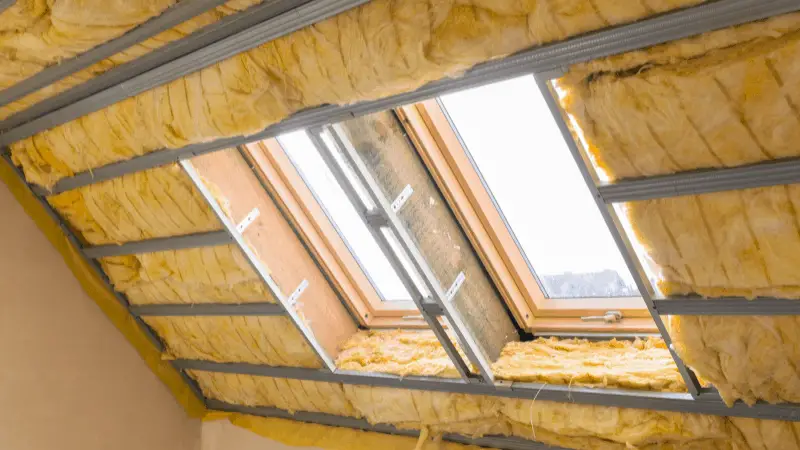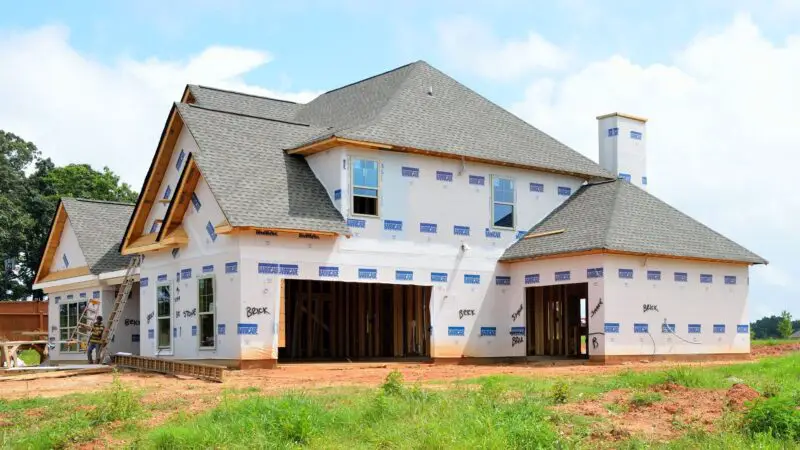Insulation plays a key role in regulating the comfort of a home’s environment, particularly in Texas, where temperatures can soar during the hottest months of the year. Insulation also helps lower the cost of heating and cooling interior space. With that said, you may be wondering if all Texas houses have insulation.
Texas homes built before the 1980s typically have little to no insulation. New residential construction from 2001 to the present falls under the IECC code adopted in 2001 and subsequently replaced by the IRC code in 2009 that mandates the installation of insulation.
Homes in Texas may or may not have insulation depending on when they were built and where they are located. It’s a good idea to understand the evolution of energy codes in any state, and the Texas heat should propel homeowners there to learn more.
Texas New Construction Homes Require Insulation
Before 1999, Texas did not have a mandatory statewide energy code, but starting in 2001, residential construction had to comply with the 2000 International Energy Conservation Code (IECC). Some of the energy-saving features include:
- Double- or triple-pane insulating glass windows
- Minimum R-levels of insulation for floors, ceilings, walls, slabs, and crawlspace walls
- Caulking, sealing, and gasketing of all joints, seams, doors, windows, skylights, and any other openings.
In 2012, Texas moved to the 2009 International Residential Code as the standard for single-family home construction. Currently, since 2016, the state follows the 2015 updated version of the IRC.
The 2015 IRC code increased the insulation R-values for various house components. These values are different depending on which climate zone the house is located in. The land area of Texas includes three of the eight total nationwide zones: 2, 3, and 4.
| Component | Zone 2 | Zone 3 | Zone 4 |
| Ceiling | 38 | 38 | 49 |
| Wood Frame Wall | 13 | 20 | 20 |
| Floor | 13 | 19 | 19 |
| Basement Wall | 0 | 5/13 | 10/13 |
| Slab | 0 | 0 | 10 |
| Crawlspace | 0 | 5/13 | 10/13 |
IECC is a stricter set of codes than the IRC, and a homeowner can always choose to follow the more stringent path. Since builders are required to use the IRC, new homes are built with at least a minimum level of thermal protection.
What Does the R-Factor Mean in Insulation?
The purpose of insulation in a home is to control heat flow into or out of the house’s walls, floors, and attic. Insulation is given an R-value, which is a measure of thermal resistance.
The R-value lets the consumer know how much that insulation can resist heat flow across it. The higher the R-value, the better the insulation will be in keeping warm air in your space (in colder months and climates) or out of your space (during the hottest parts of the year or warmer climates).
Even if your Texas home already has insulation, depending on its R-value, it could be beneficial to add additional insulation to increase the resistance to heat flow.
Why is Insulation Important for All Texas Houses?
According to the Dallas News, 66% of the homes in Texas were constructed before the state adopted the International Residential Code in 2001. Some of these have been retrofitted with insulation in the attic, walls, and floors to improve energy efficiency.
However, half of all homes in Texas continue to suffer from the slow leakage of heated or air-conditioned air because they have virtually no insulating properties: no wall insulation, scant attic insulation, and poor window efficiency.
This became even more evident in February 2021 when parts of Texas experienced record lows, rolling blackouts, and power outages. Pipes in uninsulated walls and crawl spaces burst, causing thousands of dollars in damages to these older homes. Some homeowners were unaware that they were vulnerable to this extreme cold.
Current law does not require older homes to be brought up to today’s energy codes. However, homeowners who upgrade their home’s insulation will definitely reap the benefits with lower energy bills, a more comfortable home, and protection from extreme temps, however infrequent they might be.
How Do I Know If My House Needs Insulation?
If you’d like to know how well (or poorly) your Texas home is insulated, conduct a home energy audit. It’s simply an assessment of how much energy your home uses and how or where your home might be leaking air.
Energy audits can be done as a DIY project, or you can hire a certified auditor to assess your home. Professional auditors can be found through RESNET.
Final Thoughts
It’s safe to say that older homes in Texas, particularly those built before the 1980s, would benefit from an inspection to determine if insulation is present or not and how much heat is escaping or entering the home.
Adding or upgrading insulation to these homes may cost on the front-end, but the homeowners will reap the reward of lower energy costs and enjoy a more comfortable life on a daily basis, regardless of the weather outside.





